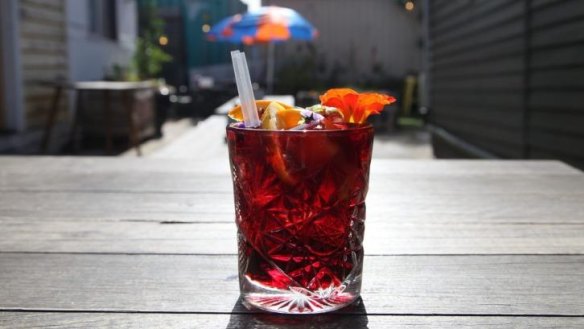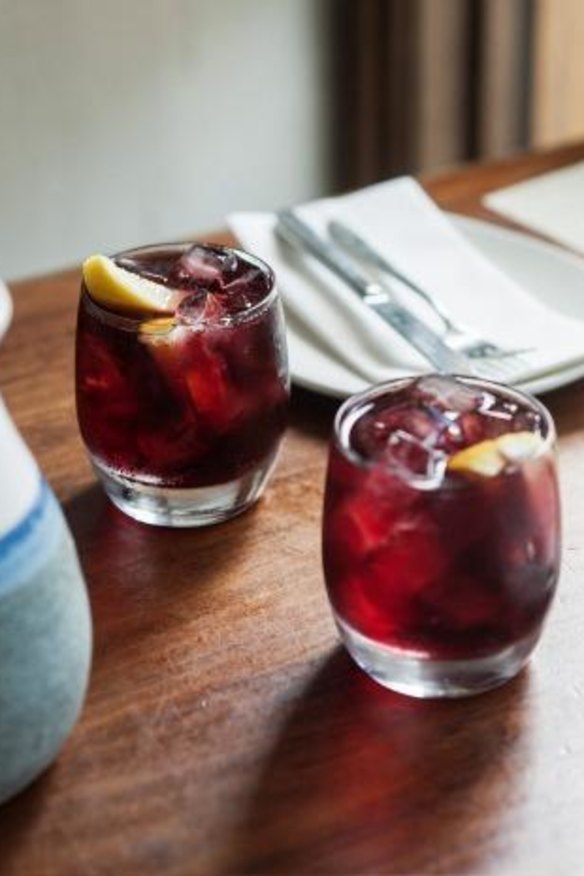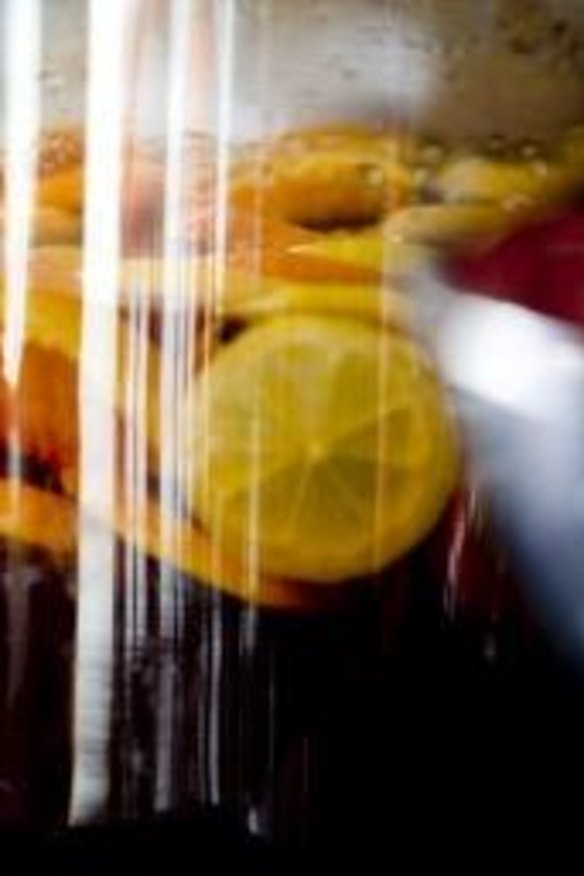Summer is the season of sangria

In the '70s sangria was just a dodgy vehicle for rapidly oxidating leftover bottles of red. MoVida's Frank Camorra is the first to admit "it's not a sophisticated drink, it's a party drink". When he opened MoVida in 2001 he wanted to steer diners away from the usual Spanish cliches, and initially, left sangria off the menu. It wasn't long though before he caved to customer demand. "People just want it," he says. "They come to a Spanish restaurant and they want something refreshing. So we just kept serving it."
Camorra also agrees that sangria has a special festiveness about it. "It feels like a holiday drink." And for Aussies, there's something especially fitting about a spicy, chilled summertime drink – it just screams 40-degree Christmas and happily sloshed afternoon siesta.
Essentially a red-wine punch, the sangria we know today traces its roots to Roman times more than 2000 years ago. In their travels across the Iberian Peninsula, the Romans planted grapevines for wine. As water was largely unsafe to drink at the time, it was customary to add alcohol (like wine) to kill the bacteria. When someone decided to add fruit and spice to jazz up the taste of the poor-quality wine, a blueprint for the fruity punch was born.
Classic sangria is typically made from a mix of red or white wine, chopped fresh fruit (traditionally citrus), spices (nutmeg, cinnamon, cloves), something to sweeten (like honey, fruit juice, sugar syrup, lemonade or liqueur) and brandy (if you want it to kick – though this is optional). It can be served individually over ice or in a jug, carafe or traditional punch bowl, if you're making it at home. It's roughly two parts lemonade to one part wine, with the brandy option added judiciously, although if you want a guaranteed party starter, here's your chance.
Asked if he has any special sangria memories Camorra says, "Oh yeah, as a kid growing up in Geelong! There was always a bit of a PG warning on how much of the fruit you were allowed to eat. We thought the fruit was the best part. Especially in summer when there was stonefruit – it's soft so it soaks up loads of alcohol."
It's here that many of sangria's detractors are likely to have come unstuck. If you've ever tried the backyard versions you'll know that trying to gauge sangria's alcohol content (anywhere from 4 per cent to 12 per cent) can be a perilous exercise in booze roulette. Its ingredients are up to whoever's making it, so no two are ever quite the same.

At MoVida, the recipe follows the Camorra family custom of adding a little Licor 43 – a sweet, vanilla-y Spanish liqueur said to contain a secret mix of 43 aromatic spices. They also do a white variation with cava. Elsewhere in Melbourne, we're seeing creative summery versions popping up with white wine and vodka bases, some using fresh aromatic herbs, others taking cues from the classic Pimm's Punch with the addition of cucumber and fresh mint.
In the eyes of the rest of the world, the drink is considered as unquestionably Spanish as paella and Nadal, but truth is, if you're in Spain you are unlikely to see too many Spaniards hitting the sangria outside of family gatherings. What's more common in the bars and cafes of Madrid and Barcelona is sangria's close cousin, tinto de verano, a simple mix of red wine and lemonade that's popular with lunching businessmen and casual drinkers.
Co-owner and beverage manager at Melbourne's Bomba, Shane Barrett, says sangria and its spritzy cousins are representative of Spain's generally unpretentious approach to drinking. "They [Spaniards] produce some of the most amazing wines in the world but they don't take it too seriously. Sure, they'll drink the amazing wines but they're just as happy to drop in somewhere and order a house vermouth – in the same way we drop in somewhere for a coffee."

If it's uncomplicated holiday fun you're after, have a summer fling with these top picks.
MoVida's sangria
Sangria base
30ml Licor 43 (Spanish liqueur containing vanilla and other aromatic spices)
30ml Maxwell spiced mead (honey wine flavoured with cinnamon, cloves and nutmeg)
30ml cinnamon-infused [St Agnes] brandy (add 3 cinnamon sticks to a bottle of St Agnes brandy and leave for at least 24 hours to infuse).
500ml dry red wine (there's no need to be precious here – any light/medium-bodied wines work best. If you want to stick with tradition, go for a cheapish rioja or garnacha. Just avoid anything too oaky).
1. To serve, add 500ml of lemonade to the base ingredients, mix and serve in a highball or medium-sized tumbler over ice.
2. Garnish with fresh orange and lemon wedges.
*For dryer sangria, cut some of the lemonade with soda water.
- More:
- Drinks